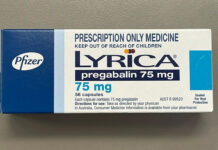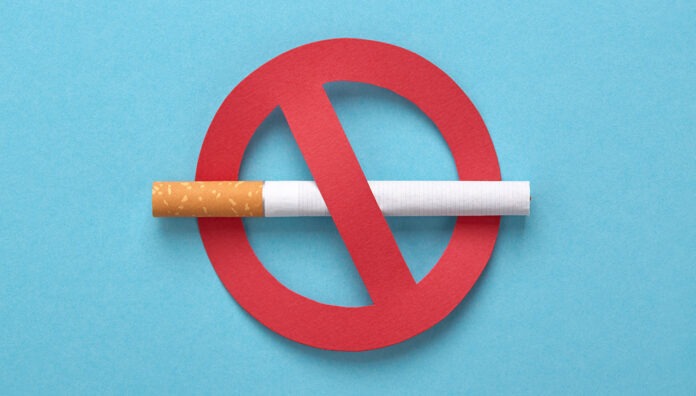Ahead of the downscheduling of therapeutic vapes on 1 October, pharmacists should be aware of a treatment option combining established therapies that could help patients kick their smoking habit.
Researchers from Monash University’s Centre for Medicine Use and Safety (CMUS) – in collaboration with Monash’s School of Public Health and Preventive Medicine and Flinders University – led a clinical trial combining varenicline and nicotine lozenges, with the dual therapy significantly improving abstinence compared to use of varenicline by itself.
The ‘VANISH’ trial (Varenicline and Nicotine replacement therapy for Smokers admitted to Hospitals) coordinated by Barwon Health – comprised 320 adult daily smokers across five Victorian hospitals, with the intervention group given the combination therapy and the control group given varenicline as monotherapy.
Those who used both varenicline and the nicotine replacement therapy (NRT) were found to have 84% increased chance of abstinence in a self-reported 12-month follow up compared to those who used varenicline alone.
After initially conducting research into pharmacist-initiated smoking cessation support for hospitalised smokers in Victoria, the CMUS team decided to look at combining existing efficacious treatments in this patient cohort, said lead author and CMUS smoking cessation expert Associate Professor Johnson George.
‘Cochrane reviews confirm varenicline as the most effective monotherapy for smoking cessation, but people have difficulty adhering to the treatment,’ he said.
The CMUS team looked at the Pharmaceutical Benefits Scheme utilisation of varenicline, finding that many patients start on the medicine but don’t come back for the maintenance course.
‘The treatment course is 12 weeks, but a lot don’t even come back for the maintenance treatment [supply], which is after the first month,’ said A/Prof Johnson.
‘In the context of heavy smokers who continue to experience withdrawal symptoms when taking varenicline alone, based on our findings it is certainly worth considering introducing nicotine lozenges to their treatment regimen.’
Finding the right formula
Given varenicline binds with α4β2 nicotinic acetylcholine receptors, it was advised that the medicine shouldn’t be used in combination with NRT when it first came to market, said A/Prof George.
‘It was thought that when a treatment saturates the nicotine receptors, an additional NRT will not work,’ he said.
‘But we hypothesised that varenicline does not fully saturate α4β2 nicotinic acetylcholine receptors and varenicline does not completely replace the dopaminergic effect of smoking, and therefore only partially attenuates nicotine cravings.’
‘By providing an NRT on top of varenicline, that may enhance the receptor saturation and reduce craving.’
During the study, participants were given the standard regime of varenicline, which is:
- 0.5 mg once daily on days 1–3
- 0.5 mg twice daily on days 4–7
- 1 mg twice daily from day 8 onwards for 11 weeks.
They were also asked to take the mint flavoured 2 mg NRT lozenges as needed.
‘They could take up to 15 lozenges per day, [dosing one lozenge] every 1–2 hours, initially,’ said Prof George. ‘And then, depending if the cravings subside, they didn’t need to use them as frequently.
Lozenges were chosen over longer-acting forms of NRT, such as patches for several reasons.
‘Lozenges are quick and short-acting, so they can help to combat cravings, and any adverse effects that arose could be managed easier than with longer-acting therapies.’
Further research required
The research results were heavily based on self-reported abstinence at 3, 6 and 12-month intervals.
However, biochemical validation, using exhaled carbon monoxide, is the best way to confirm smoking cessation, said A/Prof George.
While this approach was the aim of the research, the COVID-19 pandemic threw a spanner in the works.
‘We could not offer it to a lot of patients, because any aerosol generating procedures were not allowed,’ said A/Prof George.
However, the small number of people with biochemically verified abstinence the team was able to record showed strong, albeit not statistically significant, results.
‘We had very small numbers available for analysis, but the results were 18 versus 16 in favour of the intervention,’ he said.
‘Ideally the next step would be to conduct large clinical trials to measure biochemically validated abstinence of the combination therapy, including in people with vaping addiction, and also to look at a wider range of settings.’
However, self-reporting can be a ‘reasonably good measure’, provided all the right questions are asked, said A/Prof George.
This includes validated questionnaires to assess abstinence, such as the Fagerström Test for Nicotine Dependence or it’s short form – Heaviness of smoking Index to determine:
- How many cigarettes do they smoke each day?
- How soon after waking up in the morning do they have the first cigarette?
‘Those are the two most important questions we need to ask anyone who says they have been a smoker and has given up smoking recently,’ said A/Prof George.
‘Even if they haven’t given up completely, if we can see a big decrease in nicotine dependence [in those areas], it definitely suggests the patient is making improvements.’
The combined approach in action
If a patient presents with a prescription for varenicline, A/Prof George suggests pharmacists consider offering the combined approach.
‘Pharmacists can say, “you may have some cravings initially, so if that happens, you can use these lozenges”.’
This could help to combat withdrawal symptoms and encourage use of NRT rather than cigarettes.
‘Guidelines [suggest] that rather than abruptly stopping smoking, you can cut down over the first week or at least month,’ he said. ‘So rather than having a cigarette, they can use NRT lozenges.’
As the downscheduling of therapeutic vapes looms, A/Prog George said it’s more important than ever for pharmacists to look to established smoking cessation treatments.
‘Rather than vaping helping stop smoking, we see vaping acting as a gateway to cigarette smoking and eventually a lot of dual users,’ he said. ‘Long-term vaping can cause significant health issues, including the development of the lung condition E-cigarette or Vaping Use-Associated Lung Injury (EVALI).’
Pharmacists should take every opportunity to counsel people on methods of smoking cessation that are both safe and shown to be effective in large systematic reviews, advised A/Prof George.
‘Pharmacists can recommend over-the-counter combination NRT medicines, such as patches and an acute release dose form such as mouth spray or lozenges, which is really effective – and counsel patients about how to use those products properly,’ he said.
However, behavioural counselling is ‘absolutely essential’ when offering any smoking cessation treatment, said A/Prof George.
‘For any medication to be effective, it has to be combined with behavioural counselling [which] pharmacists should be offering.’



 Dr Peter Tenni[/caption]
Dr Peter Tenni[/caption]
 How should we deprescribe gabapentinoids, according to the Maudsley Deprescribing Guidelines[/caption]
How should we deprescribe gabapentinoids, according to the Maudsley Deprescribing Guidelines[/caption]



 Pharmacists have always prescribed, but they have the potential to prescribe much more
Pharmacists have always prescribed, but they have the potential to prescribe much more





